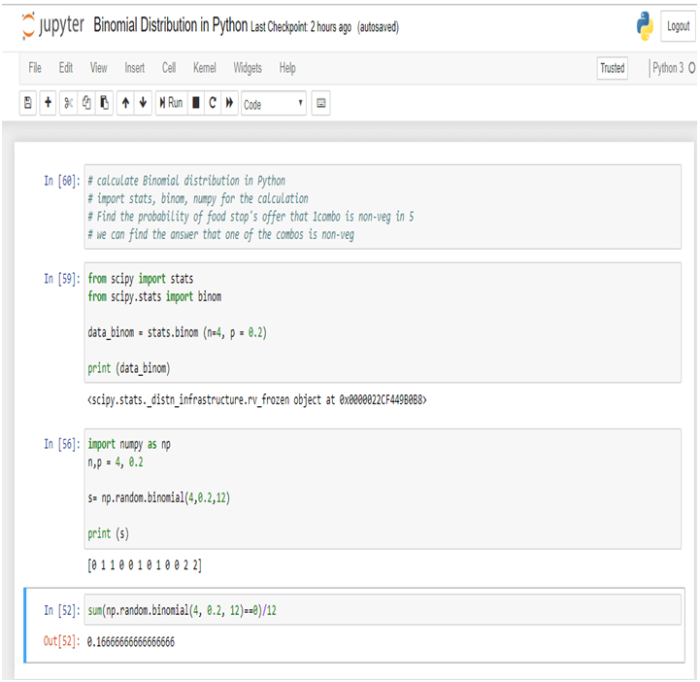

We will loop over the number of successes desired to create this distribution.įor example, from scipy.The scipy.stats library in Python provides us the ability to represent random distributions using Python! The library has dozens of distributions, including all commonly used distributions. It is different from the previous distribution. We can use it to create a distribution of binomial probabilities.

The () function returns the binomial probability for some given values. Use the () Function to Create a Distribution of Binomial Probabilities in Python We can also plot this using the seaborn.distplot() function.įor example, import matplotlib.pyplot as plt This was repeated for a sample of size 20. In the above example, each value represents the number of times an event occurs during 5 trials when the probability of success was 0.7. We can specify the number of trials ( n), probability of success ( p), and size of the final output ( size) as parameters in the function.Ī = np.random.binomial(n = 5, p = 0.7, size = 20) We can use the () function to return a sample of this distribution. The numpy module can generate a series of random values in a numpy array. Use the () Function to Create a Binomial Distribution in Python

This tutorial will demonstrate how to create a binomial distribution in Python. It is possible only when exactly 2 outcomes are possible for a separate event, like a coin toss. It represents the actual outcomes of a given number of independent experiments when the probability of success and failure is known. Use the () Function to Create a Distribution of Binomial Probabilities in PythonĪ binomial distribution is an essential concept of probability and statistics.Use the () Function to Create a Binomial Distribution in Python.


 0 kommentar(er)
0 kommentar(er)
